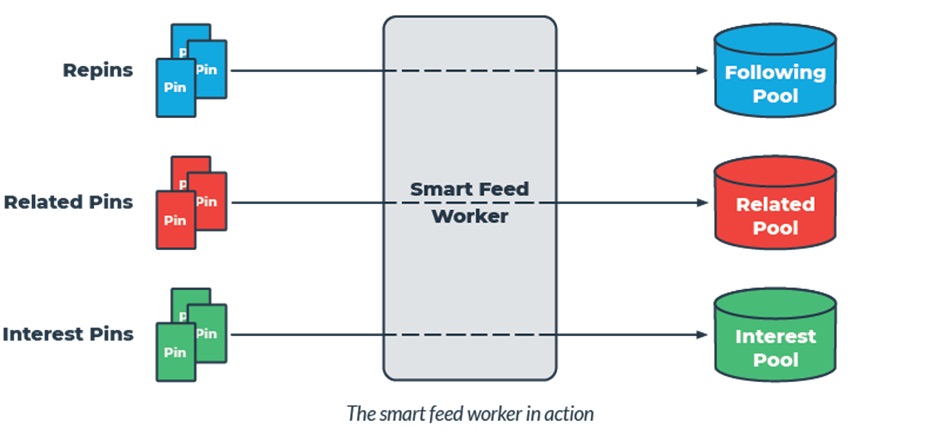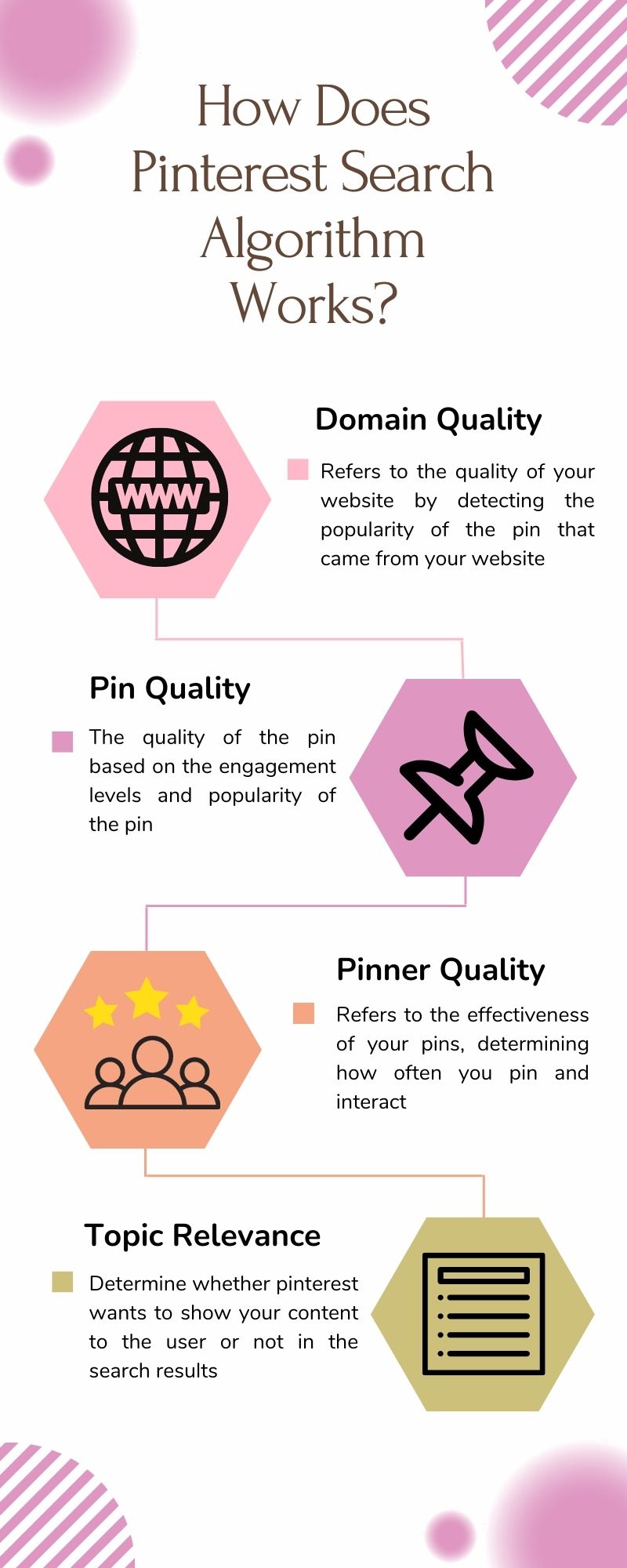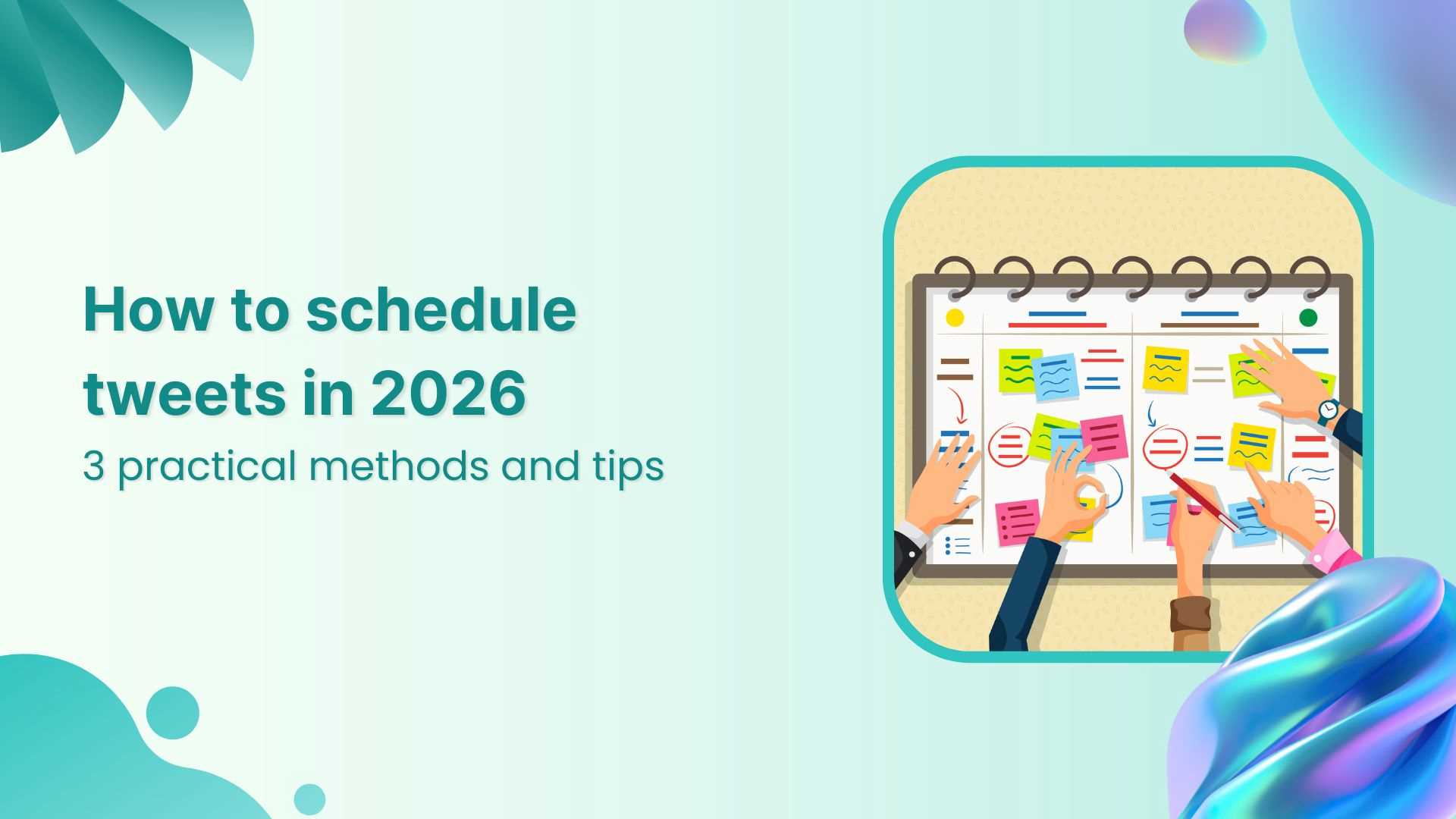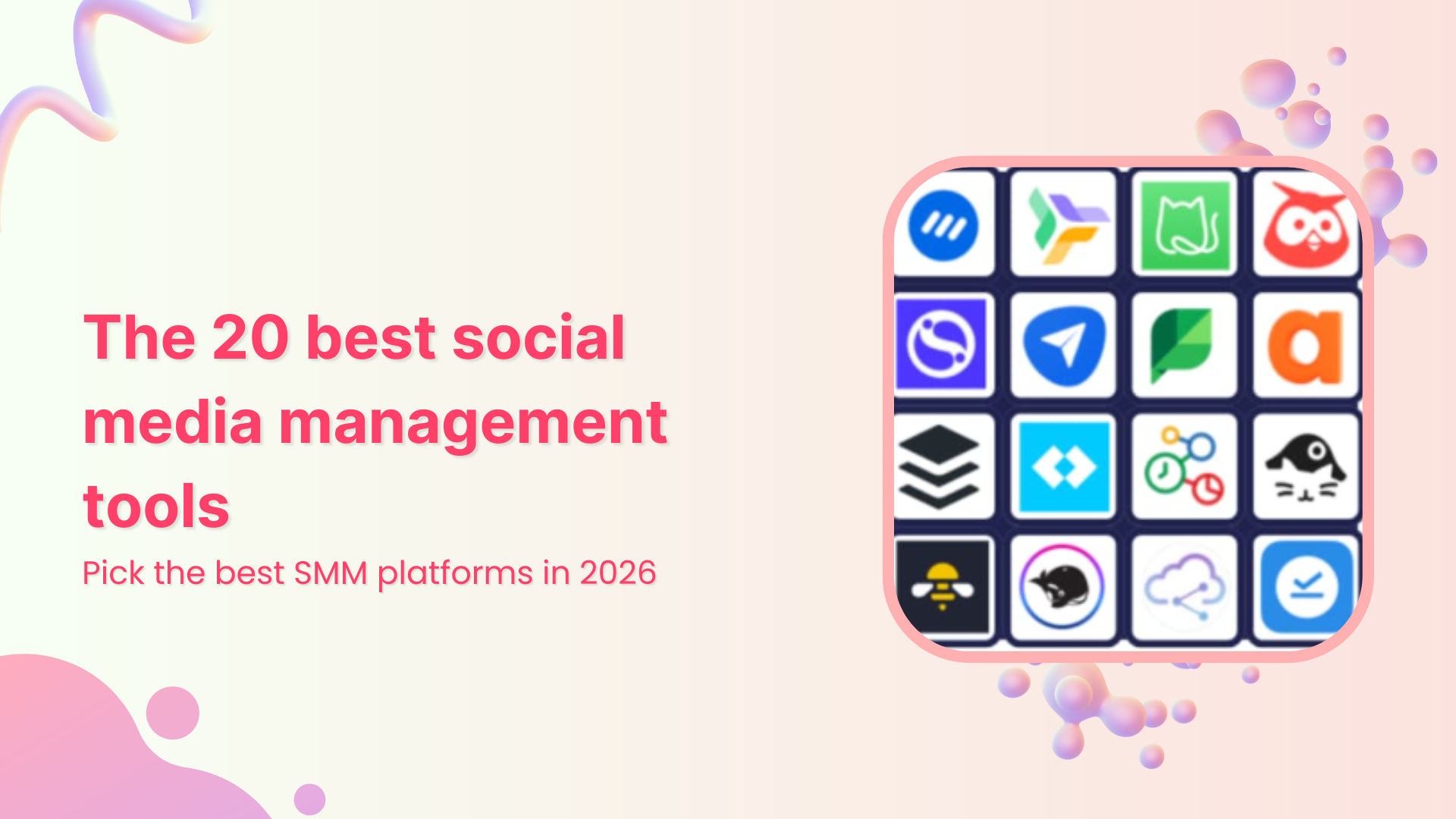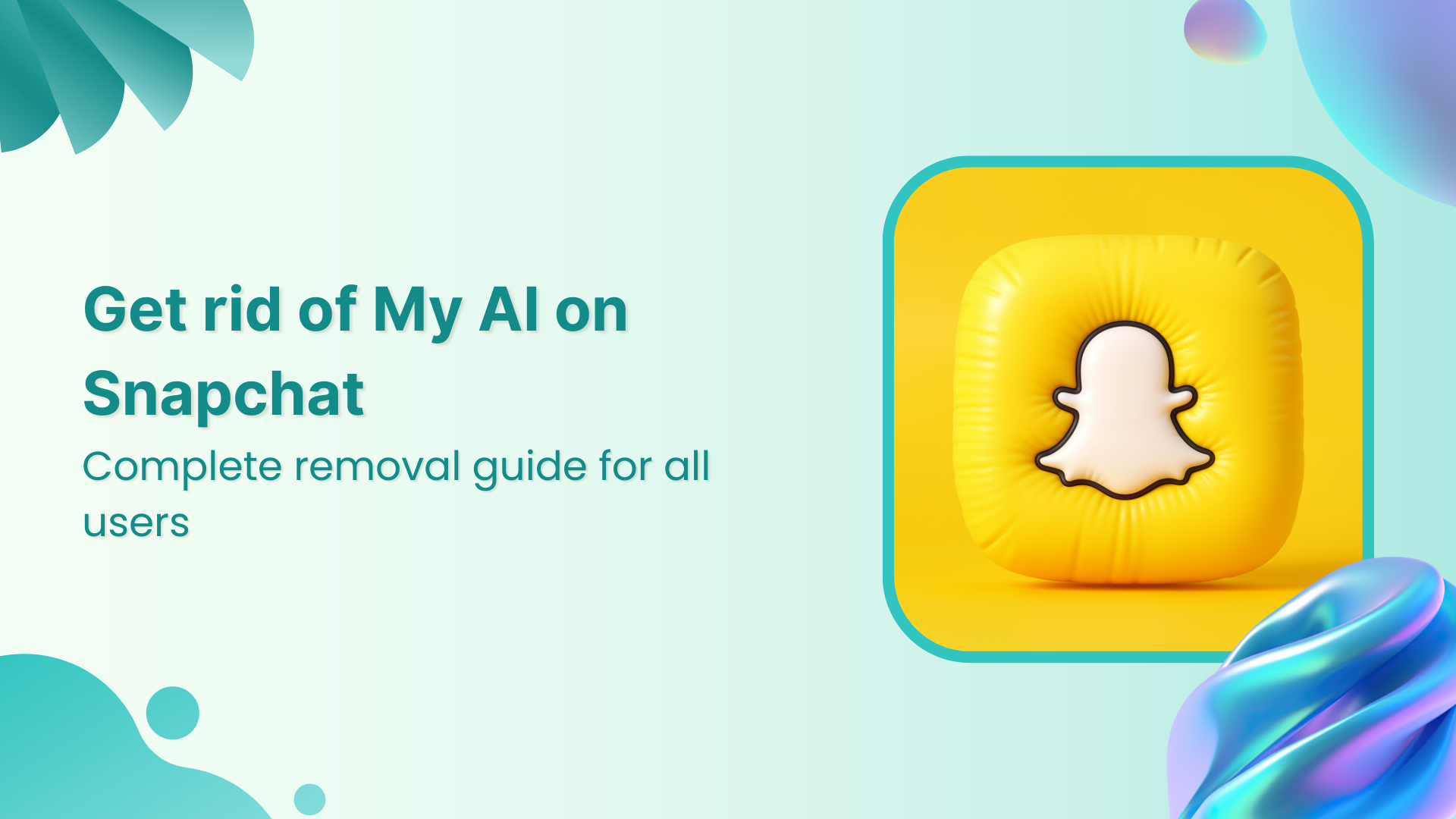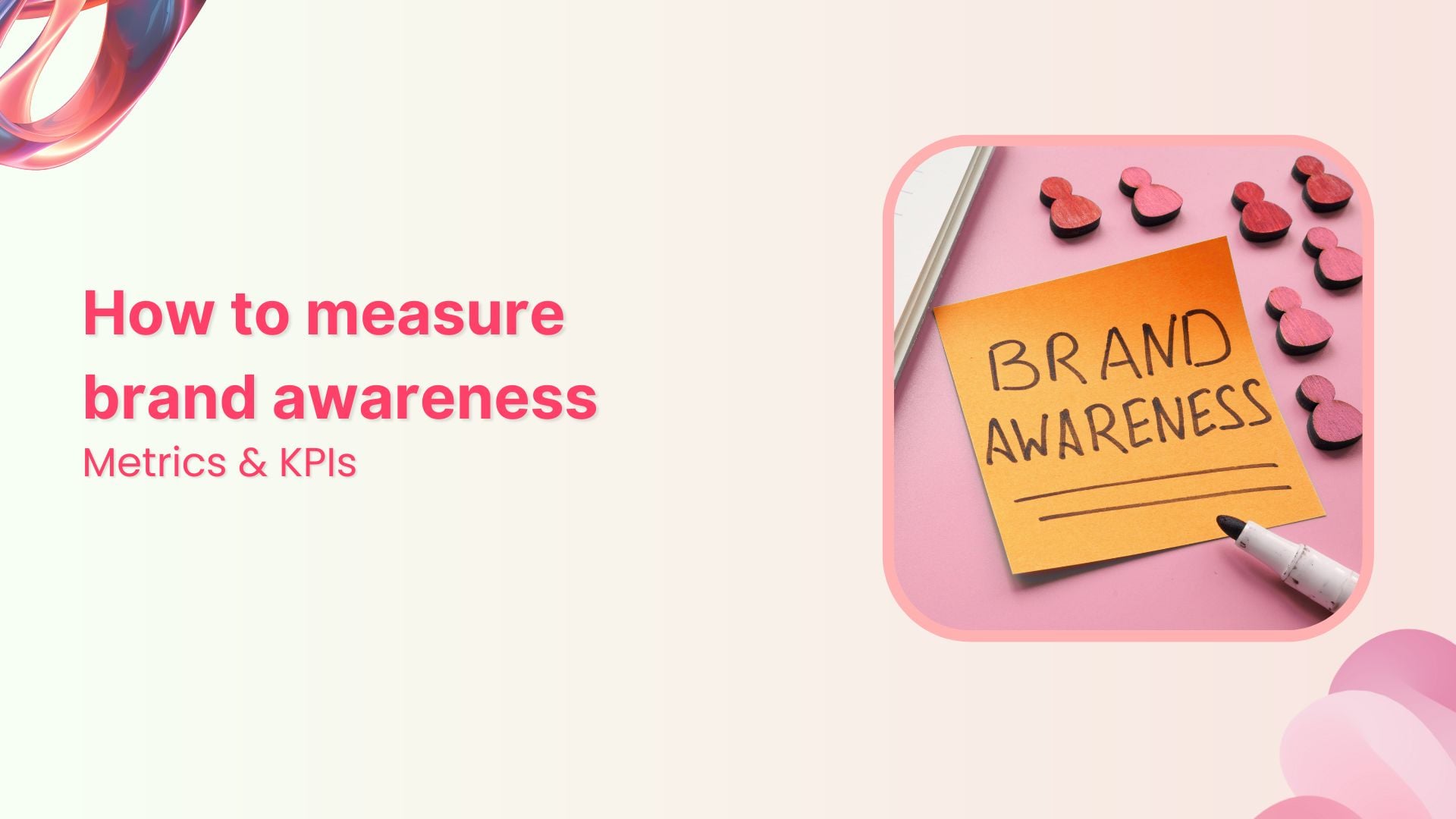Bulk-generate & schedule posts in seconds with Smart Scheduling. Try now!
How Pinterest algorithm works in 2025: 15 tips to beat it
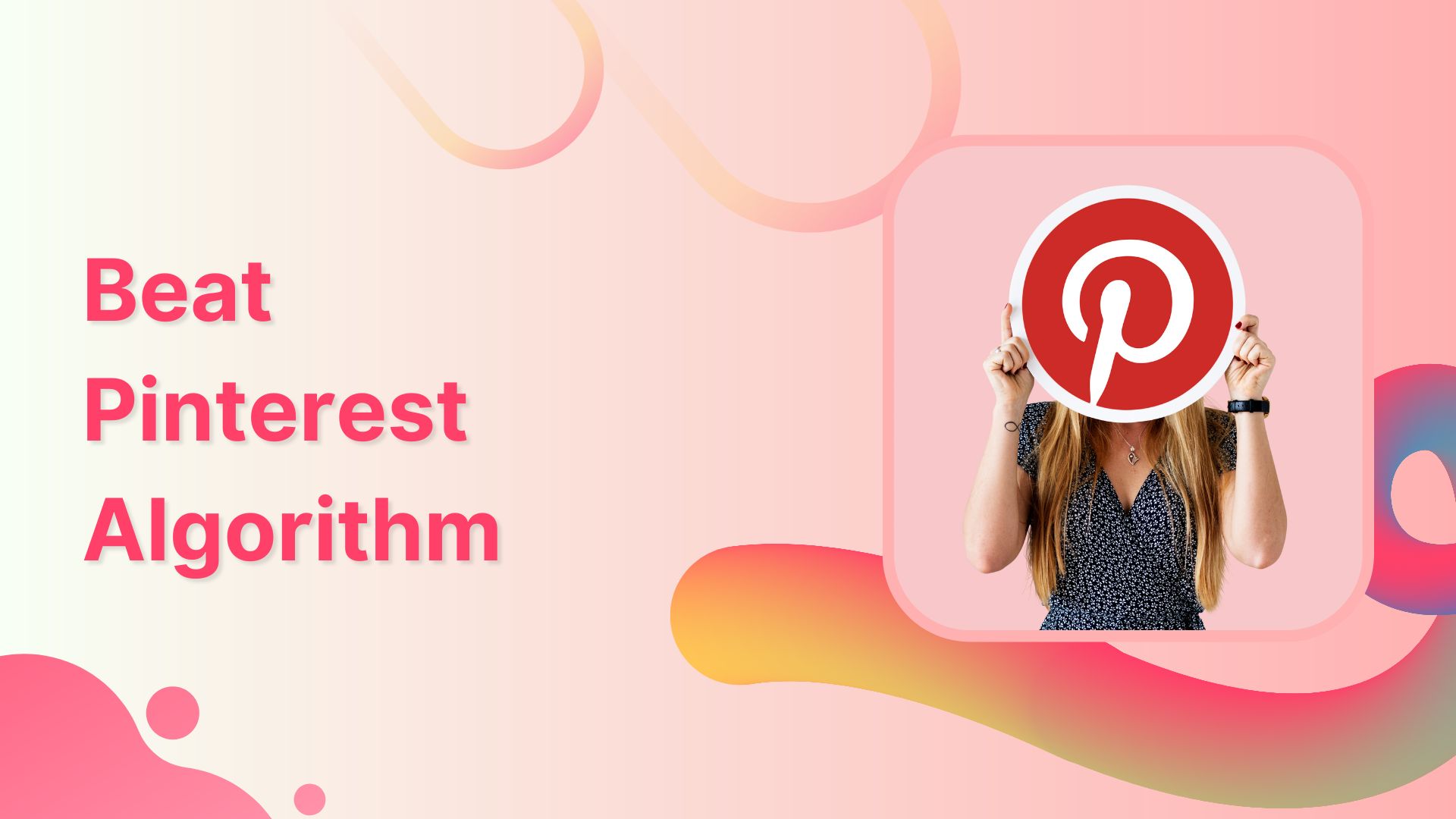
World’s 14th most widely used social media platform, Pinterest can be a significant source of genuine visitors to your website, with 444 million users globally and 5 billion searches conducted on the network each month. Knowing the Pinterest algorithm will assist you in obtaining insight and grip on the platform and redirects traffic to your blog or website, it should be your top priority to learn it.
There are many resources for guides and information on Pinterest marketing strategy. If you’re unfamiliar with the platform, it may be challenging to take everything in.
Additionally, your tactics are likely out-of-date if you’ve not used Pinterest for a long time.
This article will provide practical advice for using Pinterest to expand your blog and drive a tonne of traffic. Believe me, it’s not too difficult.
What is the Pinterest algorithm?
Pinterest is a graphical search engine frequently mistaken for a social network. Understanding the fundamental SEO methods is crucial to learning the Pinterest algorithm because search engines base their content rankings on specific information.
However, how Pinterest’s search engine algorithm chooses which pins to display to consumers when they type in search queries is more crucial for your traffic plan.
Like most people, you generally use Pinterest to look for new recipes, fashion ideas, or house decorating inspiration. The content visitors see on Pinterest is chosen using its social media algorithm, as is typical for established social media networks. The internal dynamics of the Pinterest algorithm are more open compared to certain other sites.
When it comes to attracting viewers to content, this benefits marketers. There is a significant amount of science behind the platform, which you might not be aware of. This social networking site constantly modifies its algorithm to present viewers with the finest material.
Mastering the algorithm is essential for success on Pinterest. The search algorithm determines engine results of what pins appear in a user’s stream. Therefore, it is important to keep up with the most recent content marketing trends because it is continuously changing.
You are more likely to appear in someone’s feed with more engagement. Thanks to Pinterest’s most recent algorithm update, users will now see significantly pertinent pins.
The system examines a user’s previous pins and finds pins that are similar to them.
Also Read: LinkedIn Algorithm
How does the Pinterest algorithm work?
The Pinterest search algorithm lets users discover pins relevant to their interests. It is hard to determine the precise ranking elements included in the Pinterest algorithm. However, the user’s search query, the user’s behavior on Pinterest, and the substance of the pin are just a few of the parameters the algorithm considers when determining how relevant a pin is.
The algorithm emphasizes the four key elements:
1. Domain quality
Pinterest evaluates your website’s quality based on its domain. Pinterest examines the performance of the page URL you link to in each of your pins when determining the domain quality of your website. How does Pinterest assess your website’s content quality? Your domain quality on Pinterest will rise over time if users continue to visit your website after clicking through from pins and reading your content in depth.
The algorithm allows Pinterest to determine the level of engagement of pins that originated from your website. Pinterest will categorize your website as a source of valuable information more often as the pins get more likes. Pinterest rates the quality of your domain in the same way that Google does.
Here are some actions you may do to raise the quality of your website’s domain name:
- Switch to a business account on Pinterest: You can explore stats, website traffic, and the number of repins you’re getting. Claim your website. This will demonstrate to Pinterest that you are an authentic and active pinner and that the source from which the pins originated is trustworthy.

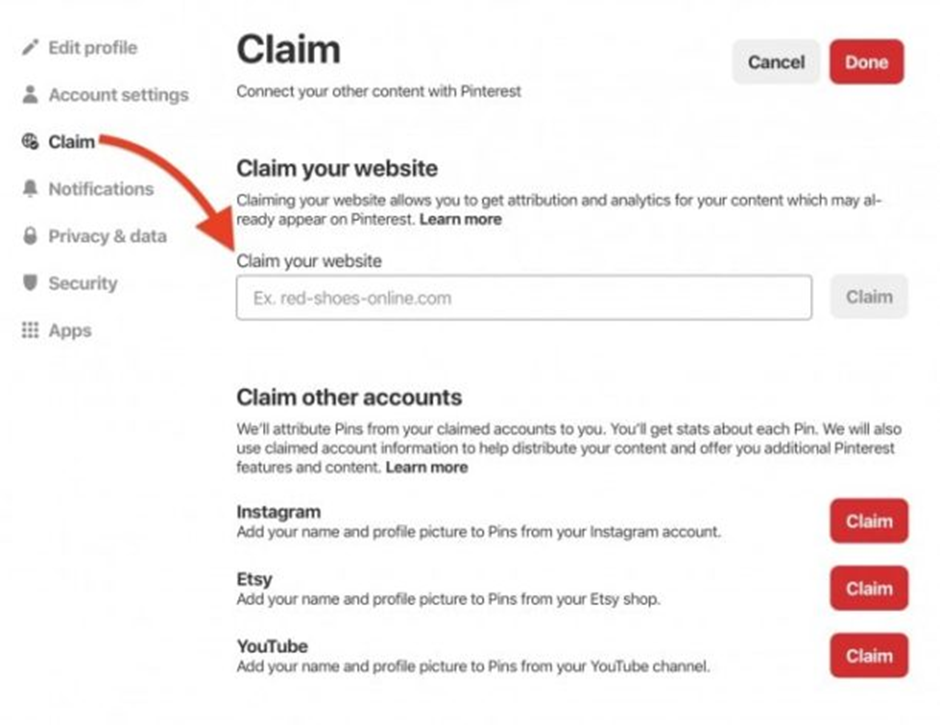 Employ rich pins: With a rich pin, data may be sent directly from your website to the pin. Your Pinterest material won’t ever be outdated because rich pins are regularly updated.
Employ rich pins: With a rich pin, data may be sent directly from your website to the pin. Your Pinterest material won’t ever be outdated because rich pins are regularly updated.- On your Pinterest account, pin frequently: By frequently pinning, you’ll show Pinterest that you’re an active user and get paid for the time you spend on the site.
- Produce and pin top-notch content: Pinterest will continue to display this material to more users if you pin excellent and recent content that promotes saves and comments.
2. Pin quality
In the Pinterest algorithm, your pin’s quality is the most important factor. Your pins’ level of popularity and engagement will frequently affect how good they are. Your pin will rank higher for quality the more others interact with it by clicking through, saving, magnifying, adding a photo, or commenting. Based on the engagement rates and popularity of the pin, this visual platform evaluates the pin’s quality. The more likes, comments, and saves your pin receives, the higher its quality rating will be.
Here’s how to raise the caliber of your pins:
-
- Create eye-catchy titles: Your target audience will read names, so come up with titles that will grab their attention.
- Use high-quality images: You may use free stock images from Unsplash and Freepik, or you can take your pictures or videos.
- Use the correct image size: Images should be 1000 x 1500 pixels in size.
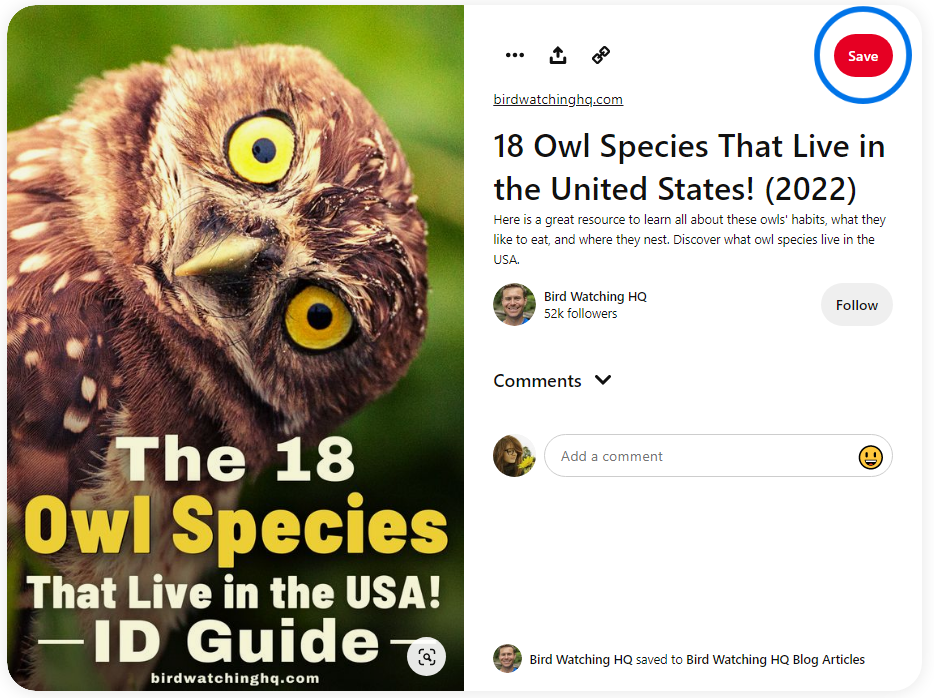
3. Pinner quality
Your pins’ effectiveness is referred to as your “pinner quality.” Pinterest rates recent content based on pinner quality. The more fantastic stuff you provide, the more people will see your feed on Pinterest. It decides how frequently you pin new stuff, how many interactions your pins typically receive, and how actively you connect with your audience. Your material has a chance of being shared on other people’s feeds if it is more impressive and intriguing.
Your pinner quality can be increased by doing the following:
- Pin consistently: To keep your profile active for the entire day, pin daily.
- Pin popular content: By pinning well-liked content, you can increase the number of people who visit your profile and introduce them to more of your pins.
- Use prolific pins: Using pins that connect with your audience will help you increase sales of your material.
- Use analytics: You may raise interaction and Pinterest traffic by employing Pinterest analytics to identify “trending” pins.

Analyze, Understand, and Improve Your Social Strategy
Stack your key social metrics against those of your competitors and make targeted steps towards social media success.
14 days free trial - no credit card required4. Pin relevance
When people search for a relevant topic, Pinterest decides whether to display its content. Analyzing the keywords and hashtags on your pins will help you do this. In addition, Pinterest assesses the relevance of keywords like Google.
Here’s how to increase the relevance of your pins:
- Research for keywords: Perform a Pinterest search to do keyword research.

- Account optimization: Improve your profile by using relevant keywords in your bio and letting visitors know what you do.
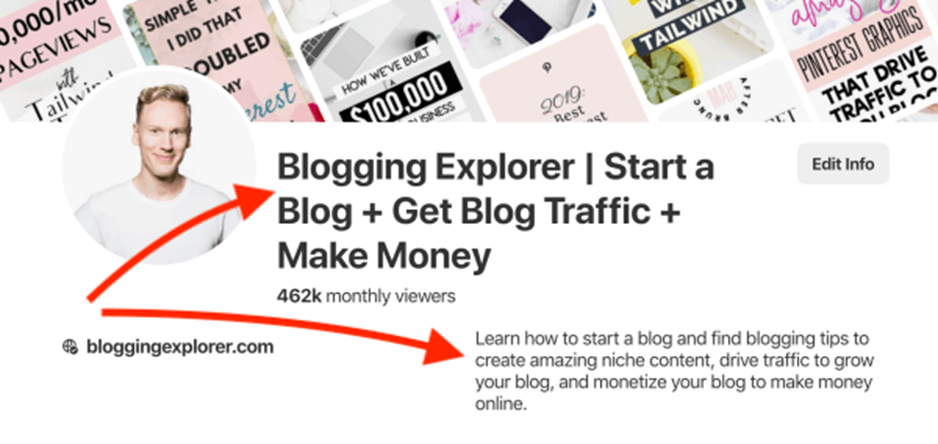
- Use productive keywords: Use trending keywords in the titles of your Pinterest boards, pins, and boards.
Also Read: Instagram Algorithm
A timeline of major Pinterest algorithm changes
If you’ve been using Pinterest for over a few years, you’ve noticed that the algorithm has significantly changed since you first joined. I have created a timeline of all the considerable algorithm changes since Pinterest’s inception to make you stay updated with the most recent adjustments.
- In 2015, Pinterest began displaying local searches according to the user’s location and language. For instance, Pinterest will show results and descriptions from Brazilian websites if a user from Brazil searches for present ideas.
- Streamlined suggestions: A few seconds after inputting a message, the visual platforms began to display the closest suggestions.
- To be equally appealing to users worldwide, Pinterest changed the “Pin” button to the “Save” button in 2016.
- Pinterest changed its aspect ratio from 1:3:5 to 1:2:8, and anything larger than this ratio will be clipped.
- Rich pin descriptions will no longer appear in feeds as part of Pinterest’s decision to simplify the platform. They will now only appear in closeups.
- 2017 – Invitations to hashtags: Initially, using hashtags on Pinterest was frowned upon; however, later that year, hashtags were made available.

- Board sections introduced: The platform added board sections to assist pinners in creating more general boards and organizing them according to various topics.
- Launch of lens (Beta): Pinterest introduced lens technology that enables users to utilize their cameras to create new ideas based on actual items.

- Following tabs: Pinterest launched a new feature in 2018 called “Following Tabs” that primarily focuses on all the boards and users you follow on Pinterest. These pins are additionally displayed in time order.
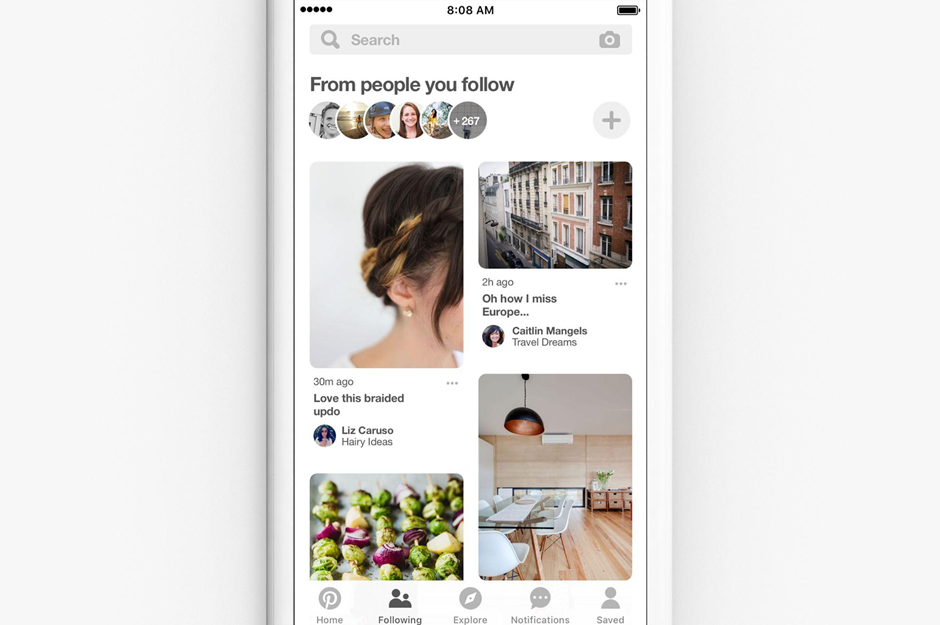
- Profile covers: A selection of the newest pins were unveiled as a profile cover. The display pins can either be chosen from the most recent or customized.

- The site has rendered the monthly reach public, allowing anyone to view the metrics on your profile.
- The introduction of the activity tab: Pinterest introduced the activity tab, which displays all the website pins that have been saved.
- The analytics dashboard for Pinterest was updated in 2019 and is now newer and cleaner than it was previously.
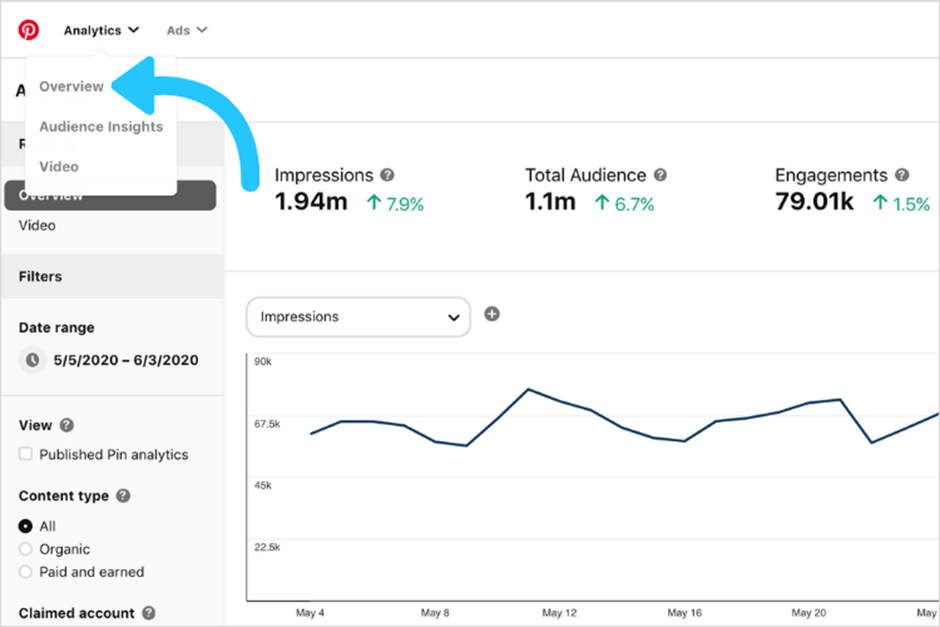
- The “Today tab” on Pinterest’s mobile app, which features handpicked topics and trending pins, was introduced in 2020.

- Fresh pins: During a live webinar that Pinterest and Tailwind co-hosted, they underlined the value of fresh pins by asserting that they “may drive more leads.” After that, the platform launched a new algorithm that promotes recent pins.
- Controllable distribution: The tool released a piece that made it evident that the new algorithm aimed to diversify the information displayed in the home feed.
- Idea pins for 2025: Idea pins, formerly known as narrative pins, take up a lot of space, and as a result, conventional pins are receiving fewer views.

Related Read: Create And Schedule Pinterest Pins
15 tips on how to beat the Pinterest algorithm
Similar to conventional SEO for websites, including keywords in your content is crucial. However, Pinterest takes things a step further. Because Pinterest is a visual platform, optimizing it entails using the right image formatting, engaging your target audience, and turning on Pinterest’s unique features like the “Save” button and “Rich Pins.”
To help you use Pinterest as an effective marketing tool, the following Pinterest tips will be helpful. Let’s start now!
1. Switch to business account
You must upgrade to a business profile if you use Pinterest for commercial purposes. This is crucial because it is against Pinterest’s terms of service to use a private account for business purposes.
You may access Pinterest statistics with a business account, which is entirely free, and learn essential things about user activity. Thanks to it, you may also use Rich Pins and other Pinterest features. Your company account can be quickly, and cost-free setup. It also offers advantages like:
- Place a link to your website in your profile’s bio to increase traffic.
- Utilize analytics to evaluate the effectiveness of your material
- Build the authority of your brand.
- Run adverts to raise awareness and interaction
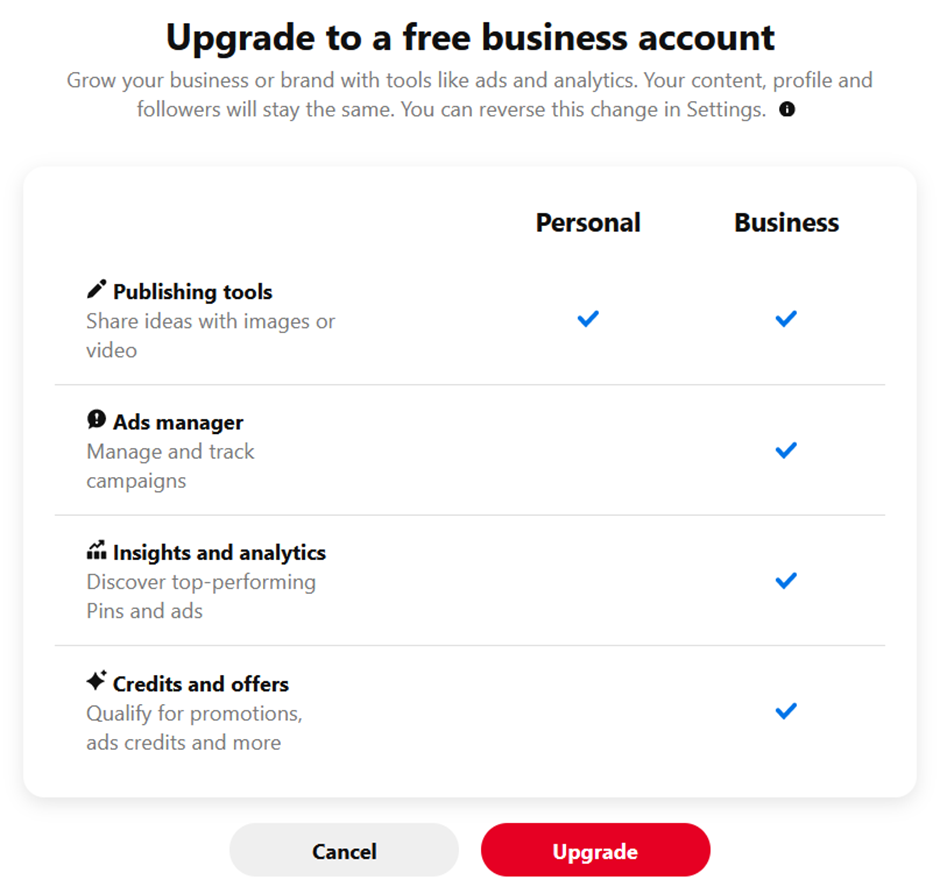
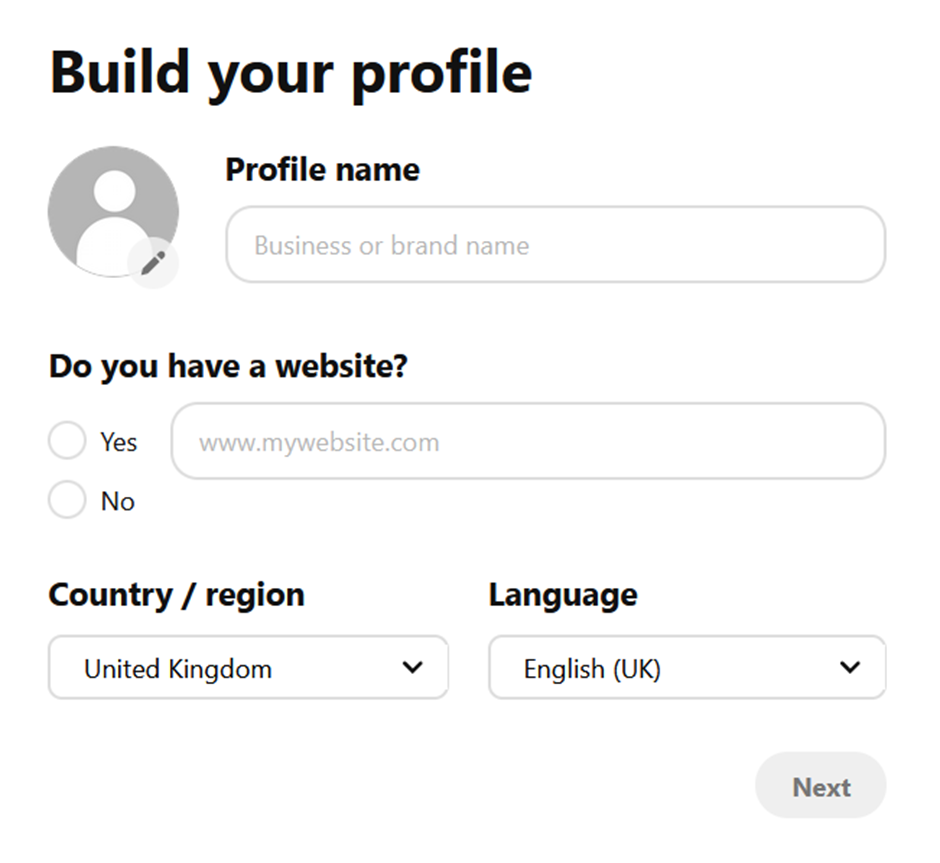
2. Verified Pinterest account
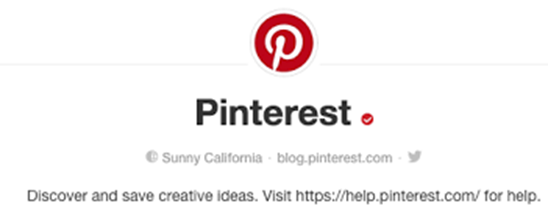
If your Pinterest account has been validated, a red or blue tick mark appears next to your name on your account. A blue checkmark denotes a confirmed merchant, whereas a red checkmark indicates a well-known person or brand. Unfortunately, it doesn’t seem like there is a way to enable or request this on your own. All you can do is take control of your website and expand your audience. Although Pinterest decides which accounts to verify, if you get the chance to add it, you’ll, at the very least, come off as more qualified.
3. Claim your website
The following action is to claim your company on Pinterest. This formally notifies Pinterest that the company you represent is the one you say it is. This stage involves confirming that you are the owner of a particular domain and calls for the addition of a link of code to your website. Again, it’s all quite simple to understand.
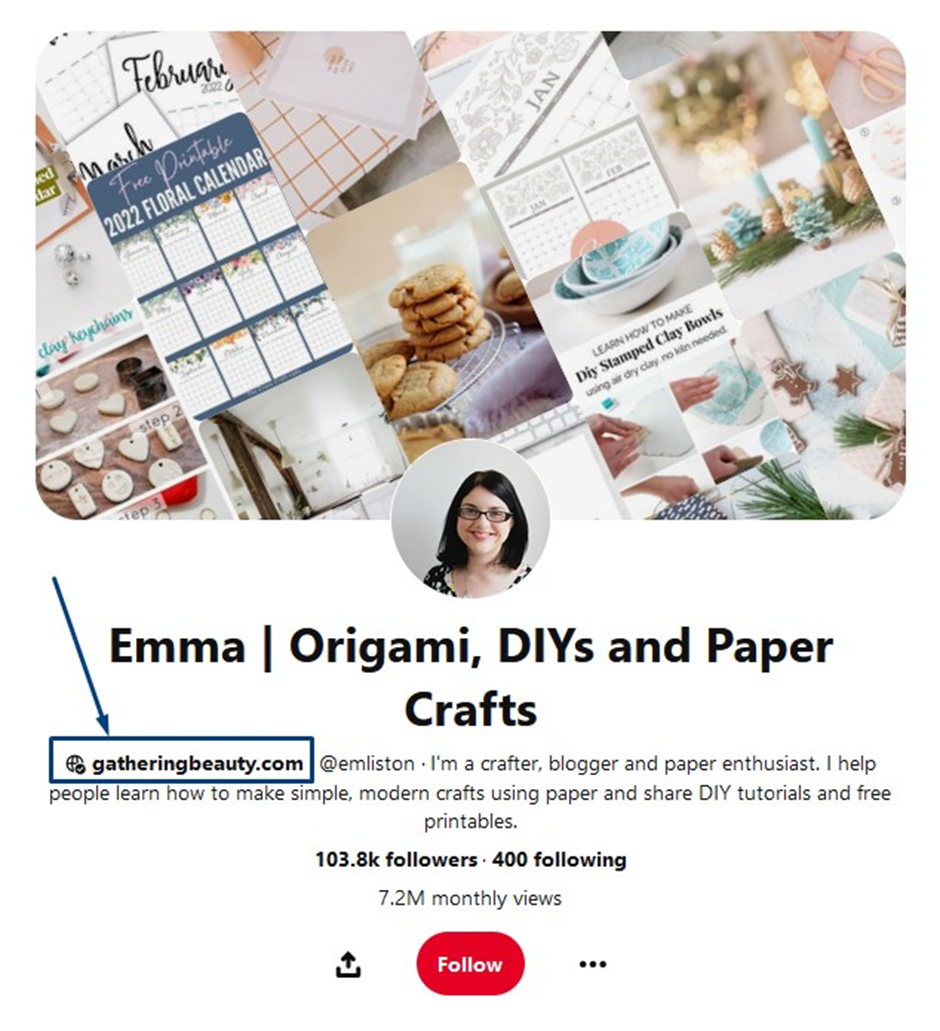
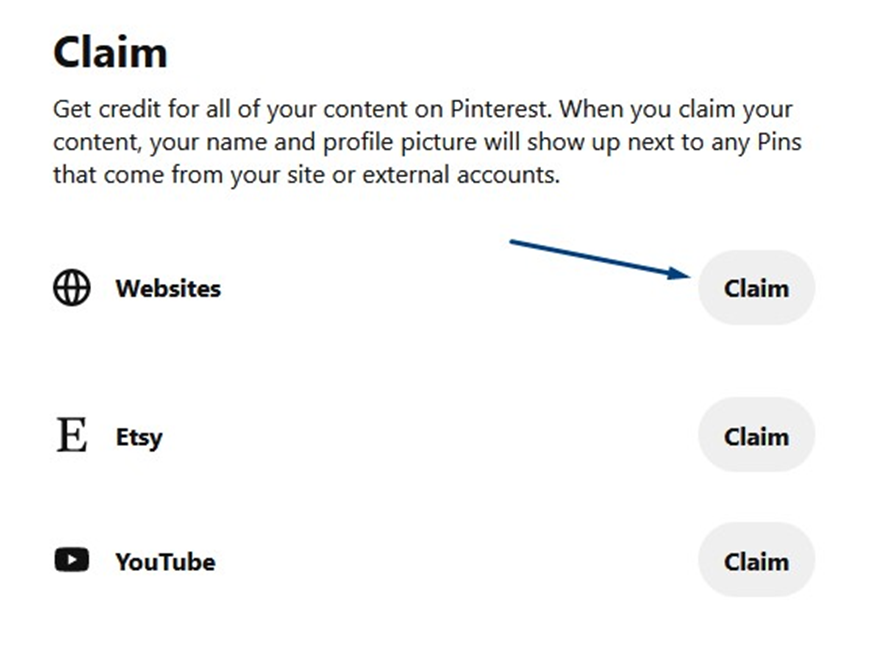
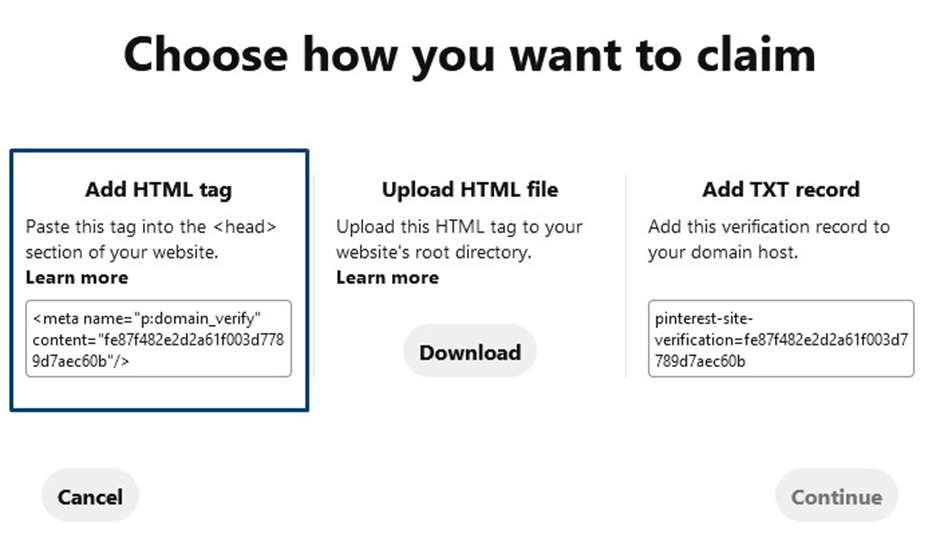

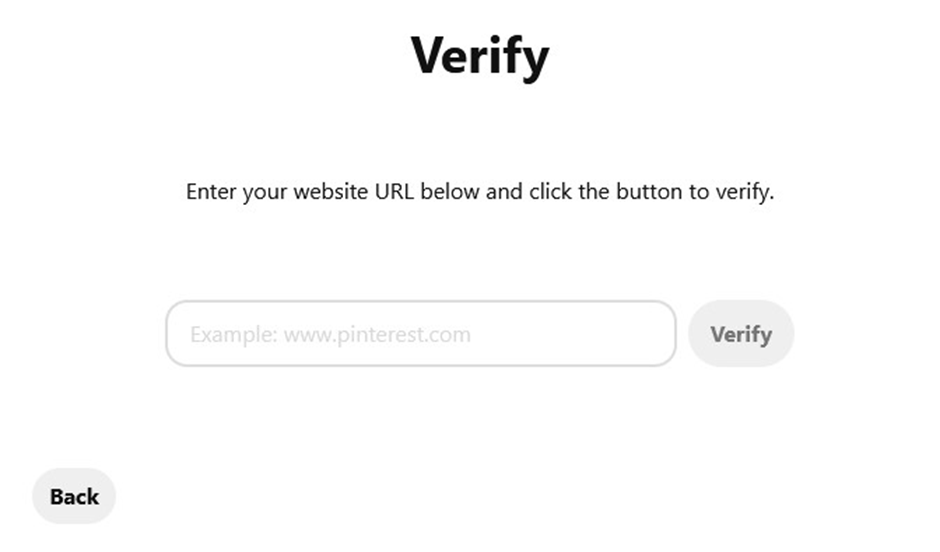

Read More: TikTok Algorithm
4. Pin engaging and valuable content
Quality content must come first in any SEO discussion on Pinterest, your website, or another platform. There’s just no getting around it.
Search engine algorithms have now become adept at determining what users want to see. Because of this, it is no longer sufficient to just stuff a website with a tonne of pointless, poorly written material, sprinkle in as many keywords as possible, and hope to rank. That might succeed if you create a time machine and travel back to 1995, but in the present, you must create something precious.
For Pinterest, the same is true. People won’t engage with your pins if you don’t start with solid material. Therefore you won’t get very far.
They won’t share it, remark on it, or save it, in other words. And they won’t be motivated to follow you either! But, most significantly, Pinterest’s algorithm will be aware that you are creating dull material, making it difficult or impossible to attract the target audience naturally.

Discover Relevant, Trending And Engaging Content
Monitor content by keywords, topics or sources of your interest. Curate content that drives engagement on all of your channels.
14 days free trial - no credit card required5. Guide content creation by people’s requirements

By simply going into your Pinterest account and typing search terms associated with your company into the search field, you may get a sense of what Pinterest users are looking for before delving into formal keyword research.
Consider that you have a website where you sell specialized bedding. You have a beautiful little niche in that industry and want to learn what comparable items Pinterest people are searching for. The Pinterest search bar may be used to begin by typing “bed sheets,” and just like Google, results will start to appear based on what other users are also inputting.
The following step concerns quantitative statistics on Pinterest search volumes, which the search terms that appear will certainly not provide. Consider this stage as the concept generation stage instead. It’s a chance to investigate all the options available.
Would you have considered researching the keyword phrase “bed sheet aesthetic” on your own? Most likely not! However, many Pinterest users are looking for it, so you may now delve further and discover related words.
The way users organize their work into “boards” with a common topic on Pinterest is one of its many lovely features. Look closely at those searches, peruse the forums of rival companies, and see what ideas come to you. Find fresh concepts and research them. Then, if they seem to be trending subjects, you can create content around them and cater to visitors who are prepared to make a purchase.
6. Research keywords

Now that you’ve explored guided search, it’s time to take what you’ve discovered and see what Google says about it. Use Google’s free keyword research tool to locate words and phrases associated with your topic. Additionally, you’ll be able to discover which keywords have less competition and more search volume.
A helpful keyword planning tool is Google Trends, and if you have the money, you can also use paid programs like Mangools or Ahrefs to access even more information. So even though this analysis is on Google searches in general rather than searches on Pinterest specifically, it is still an important piece of information for a few reasons.
Firstly, Google has a tonne of search data that, even if it doesn’t precisely match the interests of Pinterest users, will still give you a good idea of what the market wants to view. Secondly, Pinterest receives traffic from Google searches, so providing excellent material might attract some outside traffic.
Read-Up: Facebook Algorithm
7. Use keyword-rich description

It’s time to develop content that engages your target audience now that you have a general understanding of what they want to see and are looking for. Additionally, ensure a comprehensive description for every piece of content that uses the profitable long tail keywords you found. Similarly, organize your stuff on the boards you make.
8. Choose hashtags wisely & freely

Since their inception on Twitter, hashtags have been a common way to tag material on all major social media platforms, and Pinterest is no different.
Theoretically, you can focus on keywords or related subjects by adding up to 20 distinct hashtags to each pin description. Still, you don’t want to use more than four in any post. The use of too many hashtags can be intrusive and spammy.
Making sure your hashtags are pertinent to the information you are pinning is crucial. Your exposure won’t suffer if you do that, for sure. On the contrary, some Pinterest users think it boosts views during the first few minutes after you pin anything.
Related Read: Twitter Algorithm
9. Tag Pinterest to your website

You may track traffic from Pinterest and learn what users do on your website by adding the Pinterest tag, a piece of code, to your website’s source code. Do they buy anything? Enroll in your newsletter? or any other activity? You can monitor that using the Pinterest tag, whether you’re running paid or organic ads.
Although adding the Pinterest tag won’t directly impact your SEO, the data you learn from tracking conversions will collectively benefit your SEO efforts moving forward. For example, by monitoring conversions with the Pinterest tag, you may determine which keywords bring in paying visitors to your website.
10. Employ Pinterest save button on the website
The “Save” button can either be made to appear by default or just when a user hovers their mouse over the top-left corner of the image. It might be beneficial to prominently display the “Save” button if Pinterest drives a lot of visitors to your website.

By including the Pinterest “Save” button on photographs on your website, you can enhance exposure, increase traffic to your Pinterest page, and attract more followers.
For instance, if you sell apparel or jewelry, your website likely has a tonne of pin-worthy content. These images now have a “Save” option, allowing pinners to add them to their pins and boards instantly.
11. Rich pins

Because Rich Pins update price, product descriptions, and other information on the platform, they are crucial for e-commerce businesses who use Pinterest to display their items. In other words, the system will instantly update your Product Rich Pin if you change a product’s pricing on your website. By doing this, customers of Pinterest won’t click on a link to your store just to discover that the price differs from what they saw on the platform.
You can activate Article Rich Pins in addition to Product Rich Pins to have blog entries automatically updated. Utilizing both will enable you to develop coordinated advertisements showcasing your website’s most recent data. This is accomplished by placing a brief segment of HTML code on your website.
12. Format images meticulously

According to the most recent data, 85% of Pinterest traffic originates from mobile devices, which has significant implications for the ideal picture format. To put it another way, longer is better, with a 2:3 ratio being optimum and pin size of 1,000 by 1,500 pixels being the best.
Additionally, you should utilize vibrant colors that stand out on the website so that your amazing content doesn’t get lost in a sea of other pictures.
13. Use analytics

Possessing a Pinterest business profile has many advantages, including the wealth of information you can access. In addition, you may find terms that drive traffic, result in conversions, and encourage engagement by using Pinterest statistics. And even then, it’s only the beginning.
Also Read: YouTube Algorithm
14. Try Pinterest ads

Dipping your toe into paid Pinterest ad campaigns can be worthwhile to generate traffic to your page and increase engagement. Since they operate on the same Pay-Per-Click (PPC) model as Google Adsense, you may create a budget and test out paid advertisements without running a significant risk.
Before creating a Pinterest ad, you should decide your objectives. For example, do you wish to attract visitors? Boost blog click-through rates? Views for your video? Converting wins? Different ad forms on Pinterest are created for different goals.
15. Pin consistently
Success on Pinterest depends on consistent pinning. More engagement possibilities will result from doing this, and the system will thank you by giving your content a lift in the ranks.
To what extent should you post? That is dependent on various elements. If you’re just starting, 1–5 pins per day are advised, but you can (and should) generate 3-6 pins for each piece of content.
This schedule could seem overwhelming, but using automation software such as ‘Content Studio‘ might help you manage it better. It may also help you draft the text for each post and assist you with scheduling your pins.
Conclusion
This article has presented how Pinterest’s algorithm functions and the actions you can take to develop a successful Pinterest strategy. It’s time to begin designing a long-term Pinterest marketing strategy for your blog or website now that you are more informed about the Pinterest algorithm and how to correctly post your material on the platform.
You should get familiar with the platform by starting with the fundamentals. Pinterest could be a substantial source of organic traffic and sales for your company if you can gain early momentum. Start by improving your profile, boards, and pins on Pinterest. Then, find and employ relevant keywords to help Pinterest comprehend your content.
FAQs
1. How does the Pinterest algorithm 2025 work?
The Pinterest algorithm relies on four key ranking factors:
- Domain quality
- Pin quality
- Pinner quality
- Topic relevance
2. How do I increase Pinterest engagement in 2025?
- Follow these tips to increase Pinterest engagement in 2025:
- Switch to Business Account
- Verified Pinterest Account
- Claim Your Website
- Pin Engaging and Valuable Content
- Guide Content Creation by People’s Requirements
- Research Keywords
- Use Keyword-Rich Description
- Choose Hashtags Wisely and Freely
- Tag Pinterest to Your Website
- Employ Pinterest Save Button on Website
- Rich Pins
- Format Images Meticulously
- Use Analytics
- Try Pinterest Ads
- Pin Consistently
Recommended for you


Powerful social media management software
14-day free trial - No credit card required.
